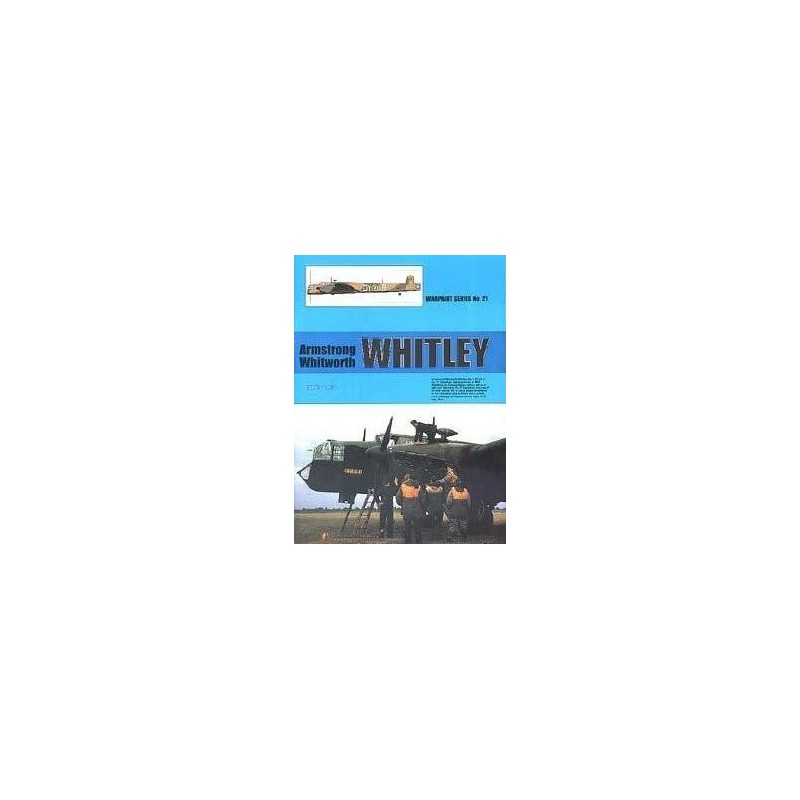
ARMSTRONG WHITWORTH WHITLEY.
Aviation during the 1930s grew by leaps and bounds, which made it all the more difficult for air forces around the world to keep current. The RAF suffered along with everyone else, and an excellent example of this can be seen in the Armstrong Whitworth Whitley. Originally designed as a heavy bomber to replace the biplane Virginia and Heyford bombers, by the time the Whitley had served for only three years it was already considered obsolete in the heavy bomber role. The Whitley was then relegated to the medium bomber role but even this was denied to the airframe as the newer Manchester, Halifax, and Stirling heavy bombers moved into the medium role. Yet even though it was decidedly outdated, the Whitley served throughout the Second World War, including being one of the first bombers to bomb Berlin.
With such famous names as Lancaster and Halifax, the history of the Whitley has been difficult at best to track down. This latest title in the Warpaint Series ends this Whitley drought with a well-written treatise on this venerable bomber. From the early days as a night bomber to Coastal Command ASW to glider towing, no stone has been left unturned in this book. The text is very well written and is all the more fascinating simply because there is so little written on the Whitley. In reading through this book I am amazed at the adaptability of the airframe to a multitude of tasks. Rather than design a new plane and put it through testing and the inevitable delays, the Whitley, out of date for what it was designed for, came forward and performed admirably at tasks that weren't even conceived when the plane was built.
Complementing the text is a great collection of period photos. Most are in black and white, but several are in color. As with many photos taken during the war, several shots in the book suffer from the mighty pen of the censor, mainly with the Coastal Command Whitleys. Some are obvious, but others have an excellent job done by the censor, or possibly not (they're so well done, they might not have been done at all, if that makes any sense). In addition to the photos, profile illustrations done by David Howley are interspersed amongst the pages, covering all the different schemes that the Whitley carried throughout its varied career. Rounding out the book is a nice set of 1/72 plans drawn by Ian Huntley.
For those who want to tackle the Modelcraft 1/72 Whitley kits, or has one of the original Frog kits, this book is essential. If you're just interested in reading about something not in the mainstream, this title will give you a glimpse at another aspect of the RAF during the Second World War.

